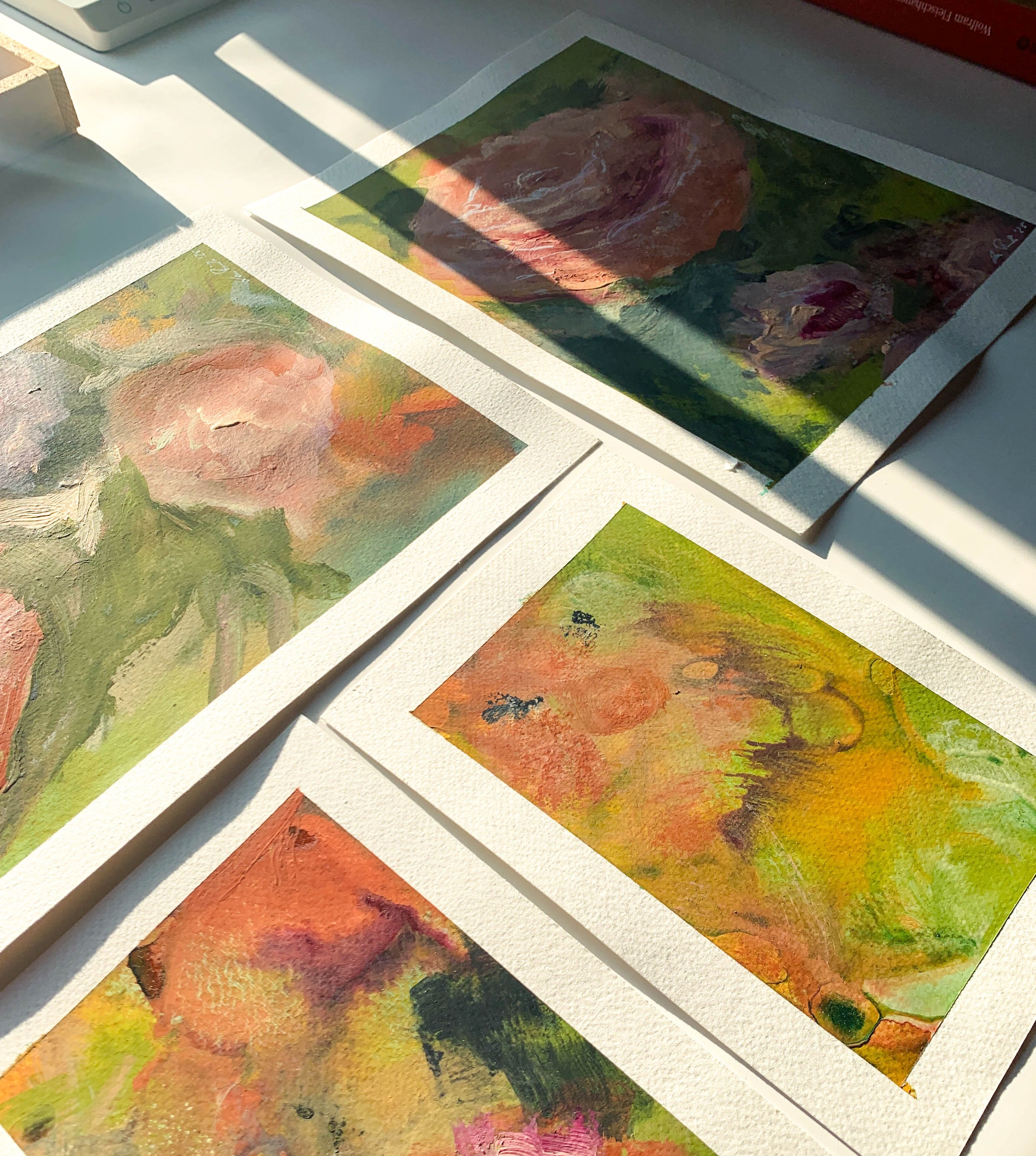No products in the cart.
April 9, 2025
There are days when words escape me. Not because there's nothing to say, but because language sometimes feels too clear, too direct, too fixed. It demands a shape where I don’t have one yet – or where I don’t yet know what it looks like. It wants structure when all I have is chaos.
I admire people who can paint with words. That’s not something I’m good at. I’d rather reach for colour and brush. Then I mix, layer, scratch, let it flow. I don’t need to explain what I’m doing – I just do it. And often, it’s only afterwards that I realise what was moving inside me.
Colours don’t ask for justification. They don’t need a title.
They can stand side by side, overlap, contradict each other – the uncertain, the wild, the tender.
A deep green next to a muted rosé can say more about my mood than a journal entry. And when I can’t quite put into words what’s going on inside me – it often shows up, all on its own, on the canvas or the paper.
Sometimes I look at a finished painting and think: Yes, that’s what it felt like.
I might never have been able to express it in words. It’s a bit like the colours are speaking for me – in their own layered, quiet way.
Right now, there’s a project on my worktable where I’m deliberately playing with colours – with no clear goal in mind. The tones are rather unusual for me. Much bolder than what I normally use – and intuitively, compositions are emerging that feel floral and lush. I’m struggling with it a bit and can feel: what’s taking shape there isn’t quite mine yet.
In the past, I might have tried to get it “right” straight away. Today, I try to be more patient with myself. And also braver. To allow things that aren’t always muted or subtle.
I observe, let it be, take the pressure off. And trust that with time, it will become clear what wants to stay – and what needs to move on.
This openness to my own process is, for me, just as much an act of trust as the painting itself. I don’t force meaning onto the image – I wait to see what it has to tell me. Sometimes not until days or even weeks later.

I almost never start with a fixed idea of what the final piece will look like. There’s no plan, no finished image in my head. I usually don’t even make sketches. I simply begin – with a colour, a movement, a shape – and see what happens.
Often, it’s only afterwards that I understand what wanted to come out of me. What mood or theme made its way into the work. It’s a bit like tracking traces within myself. What appears on the paper is mostly unconscious – but it’s true.
This process is exciting for me, too – and sometimes painful, especially when I uncover something that’s been buried deep inside for a long time. While painting, I find sadness in myself. But also joy. Sometimes both at once. Painting doesn’t ask me to resolve contradictions – it lets me give them space.
In the end, I meet myself in my paintings, in the colours. My art isn’t just a way to express myself – it’s also a way to question, explore and get to know myself. It brings me comfort and insight, playfulness and joy.
Sitting with my own (interim) results isn’t always easy – especially because my art is so personal. But maybe trusting colours also means trusting the not-knowing. Trusting that I don’t have to define everything. Trusting what exists in between things.
Maybe that’s the true essence of my painting: not to give an answer to a question – but to trust that the painting itself is asking it.
Join the newsletter now
and not miss a thing
Get exclusive insights into my creative processes, learn the stories behind my artwork
and receive invitations to my exhibitions and events.
To say thank you, I'll give you 10% off your first purchase.